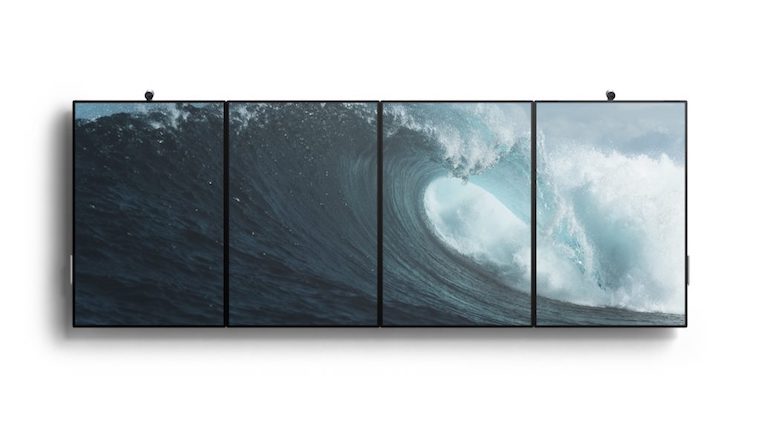On many TV military dramas or criminal “procedurals,” there seems to be a growing collection of telecommunications and computer technology that would require a super-sized budget in real life. Of course, there’s a long tradition of tech companies like Cisco that have been happy to supply (and often pay additional product placement fees) the types of technology big corporate procurement engineers specify.
At the top end of the price and feature spectrum, those big-budget interactive whiteboards and teleconferencing set-ups are getting more complex At the same time, configurations of lower-priced technology (like some using Google Chromebox) are enabling other teleconferencing and collaboration “hubs” that are dropping in price.
Wikipedia has a long list of teleconferencing products and services.
The Microsoft Surface Hub 2
In a recent blog post (4/15/2018), Microsoft chief product officer Panos Panay previewed the next generation of the Surface Hub, Microsoft’s array of hardware and software that serves as a souped-up interactive whiteboard. The second generation of the Surface Hub will be available for purchase by “corporate customers” late in 2019. The next wave of the Surface Hub system will be targeting the enterprise marketplace and will include screen options that can run as high as $22,000. (Others are priced lower.) However, when compared to other corporate-focused configurations, that price is far below what some systems fetch.
The Surface Hub 2 was designed from the ground up to be used by teams—”to get people out of their seats, to connect and ideate, regardless of location,” Panay says.
Some of the features include:
- 4K cameras that rotate and tilt with the device
- Integrated speakers
- Far-field microphone arrays
- Multi-user sign in
More features can be seen here.
Is a teleconferencing and collaboration hub worth it?
While high-end systems can have staggering prices, certain types of professions can easily justify the price of a teleconferencing hub when compared to the cost of air travel or the ability to pull-together far-flung talent.
There are even do-it-yourself alternatives that can help you take small steps into the world of digital collaboration.
Or what about wearing 3D virtual reality devices like the Oculus Riff?
We’ll explore these and other options in upcoming articles.
Promotional video from Microsoft:
Images via Microsoft

